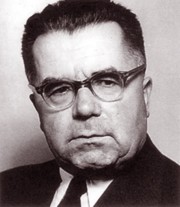
“[…] for his important research in the field of genetics and developmental physiology, and in particular in recognition of his book ‘Developmental genetics and lethal factors’, which was published in 1955. In this work he presented the problem of lethal development in the fields of zoology, botany, biochemistry and medicine, drawing on his own experience. His conclusions are of great importance for curing certain genetic defects and for preventing mutation in the nuclear age.”
Die Gutachter klassierten H.s Werk als eine wertvolle zusammenfassende Gesamtdarstellung der Letalmutanten bei Pflanzen, Tieren und Menschen. Besonders hervorgehoben wurde das Bemühen um eine einheitliche Begrifflichkeit. Experimentell arbeitete H. vor allem an der Fruchtfliege Drosophila, deren Zentralorgan für die Hormonbildung er entdeckte (‘Ringdrüse’). Als für die Erbforschung wichtig galt der Nachweis H.s, dass die Letalfaktoren sich phasenspezifisch (in einem bestimmten Entwicklungsstadium des Erbträgers) sowie zell- und organspezifisch auswirken. In diesem Zusammenhang führte H. gemeinsam mit H.K. Mitchell die papierchromatographische Technik zur Untersuchung von fluoreszierenden Stoffen (Pterinen) bei den Mutanten der Drosophila ein.

